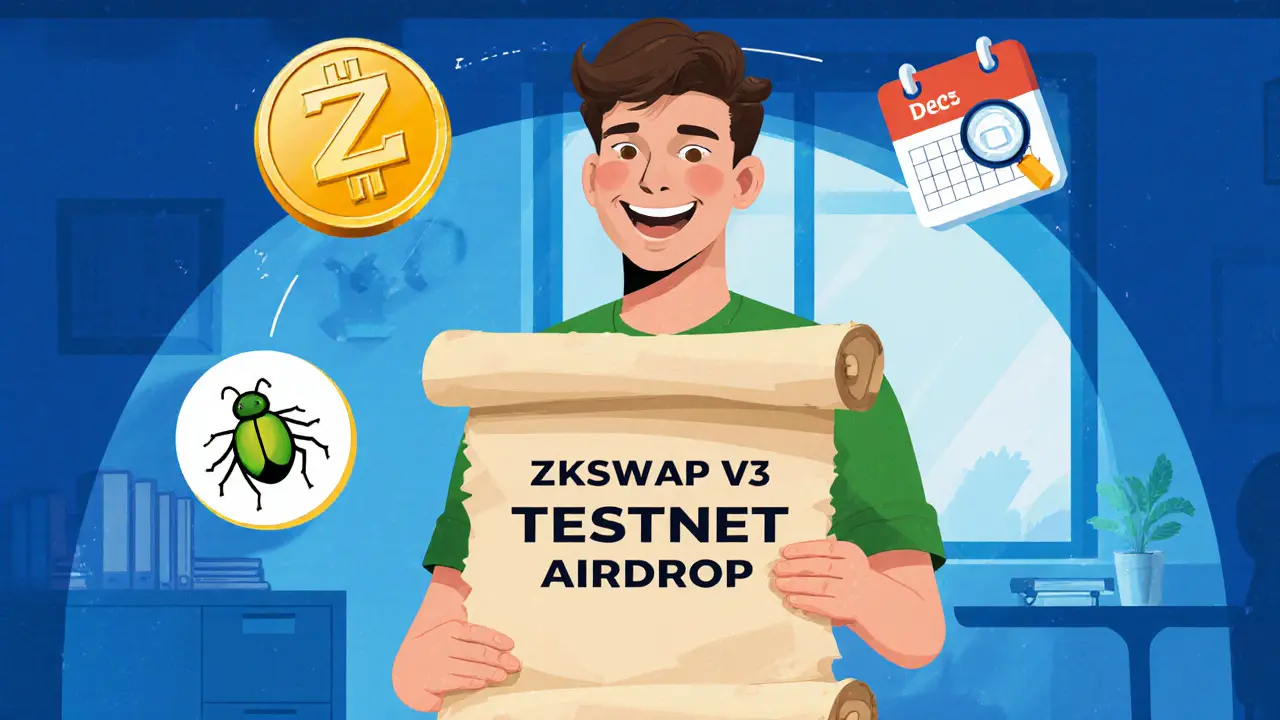Clear guide on ZKSwap V3 airdrop, ZKB token details, and the difference between ZKSwap and ZKBase. Learn eligibility, steps, and avoid common confusion.
ZKSwap V3 Airdrop: How to Claim, Qualify, and Maximize Rewards
When you hear about ZKSwap V3 Airdrop, a token distribution event for the ZKSwap V3 layer‑2 decentralized exchange that rewards early users and liquidity providers. Also known as ZKS V3 Airdrop, it aims to bootstrap activity on a privacy‑focused DEX built on zero‑knowledge technology. The airdrop requires you to meet clear airdrop eligibility, criteria such as on‑chain activity, token holding, and transaction volume. Understanding the underlying tech makes the process a lot less intimidating.
At the core of ZKSwap V3 is zkRollup, a scaling method that bundles many transactions into a single cryptographic proof. This proof, built with zero‑knowledge proof, allows the network to verify correctness without revealing transaction details, giving users privacy and low fees. Because zkRollup is a type of layer‑2 scaling, it moves most work off Ethereum’s main chain while still inheriting its security, gas costs drop dramatically and transaction speed spikes. Those technical benefits are why the airdrop targets active participants—people who already help secure the network by providing liquidity or trading on the platform.
Key Factors to Consider Before Claiming
First, make sure your wallet supports the ZKSwap V3 network. Most Ethereum‑compatible wallets work, but you’ll need to add the custom RPC settings for the zkRollup chain. Second, track your on‑chain activity: every swap, deposit, or liquidity provision adds points toward eligibility. Third, keep an eye on the official announcement channel for snapshot dates; missing a snapshot means you’ll have to wait for the next round. Finally, double‑check the token contract address before you claim—scammers often copy the airdrop name to lure users into fake sites.
Beyond the basics, you can boost your share by participating in community events. Many projects reward extra points for completing surveys, joining Discord, or writing blog posts. These actions don’t affect the core protocol but show genuine interest, and the airdrop smart contract often has a “bonus multiplier” clause. In other words, ZKSwap V3 airdrop encompasses token distribution, that can be amplified through community engagement. Treat the airdrop as a two‑step game: meet the on‑chain threshold first, then leverage community incentives for a larger slice.
If you’re new to airdrops, start small. Claim only the amount you’re comfortable holding; you can always sell a portion later if the market turns volatile. Remember that the airdropped token, ZKS, is designed for governance and fee rebates on the DEX, so holding it gives you voting power and lower trading costs. That’s a direct link: layer‑2 scaling reduces fees, which in turn makes the airdrop’s utility token more valuable for active traders. This connection explains why many users keep their ZKS instead of cashing out immediately.
Security shouldn’t be an afterthought. Always verify the official claim URL from the ZKSwap blog or Twitter account. Use a hardware wallet for the final claim step if possible; it adds an extra layer of protection against phishing. The airdrop contract itself is open‑source, so you can inspect the code or rely on community audits. In short, zero‑knowledge proof ensures transaction privacy while the contract’s open code preserves transparency, giving you confidence that the distribution is fair.
To sum up, the ZKSwap V3 airdrop is more than a free token drop—it’s a gateway into a fast, private, and low‑cost DeFi ecosystem. By understanding zkRollup, meeting eligibility, and staying vigilant about security, you can claim your share and start using ZKS for cheaper trades and governance votes. Below you’ll find a curated list of articles that walk through every step, from wallet setup to advanced tip‑sets for maximizing your rewards.

